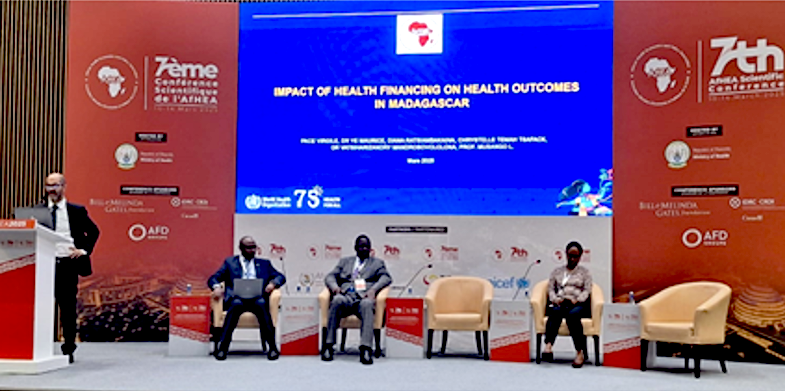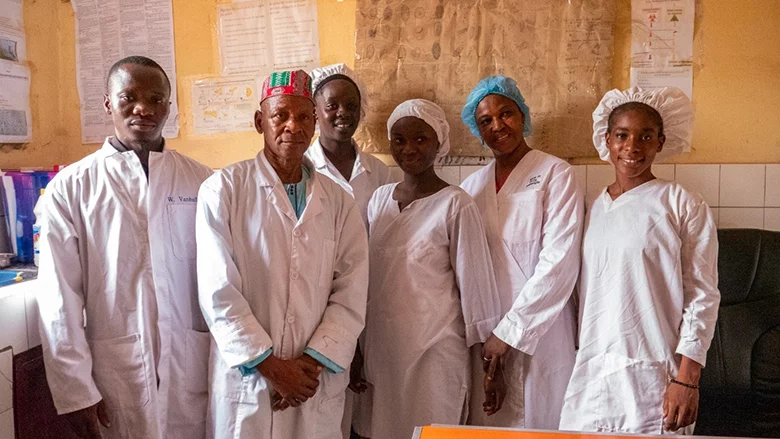The history of the health system in Guinea is described on the website of the Ministry of Health and Public Hygiene and divided into four different periods, as summarized and translated below.
The colonial period: it is characterized by the intervention of mobile clinics to combat endemic diseases and the creation of hospitals in large cities and at the level of mining and agricultural company stations. The staff was mainly soldiers from the colony, missionaries and African auxiliaries. This health system aimed mainly at protecting the settlers, their employees and to a lesser extent the natives.
The period from 1958-1984: it is characterized by a revolutionary power that placed an emphasis on equity of access to care … The financing of care and services was essentially public, and care was free. It was the time of the “welfare state”.
The period 1984-2000: … from the foundations of the national health conference held in July 1984 …, reforms were initiated …: the officialization of the private sector, the operationalization of primary health care and cost recovery within the framework of the implementation of the Bamako Initiative and the hospital and pharmaceutical reform. … At that time, the Guinean health system was a model for countries that had a similar level of development. These results were obtained thanks, among other things, to the policy of decentralization and community participation. During this period, Guinea, which had subscribed to the Alma Ata Declaration on primary health care (PHC) in 1978, committed to the implementation of this strategy which made it possible to revive health centers by setting up a benefit package oriented towards mothers, children, common ailments and the provision of essential medicines. This approach was coupled with a reform of health financing based on user contributions (Bamako Initiative) in 1987. …
Period 2000-2014: the health system is characterized by a multitude of vertical projects and programmes. Dysfunctions of the system were noted, and the Ministry of Health organized the review of the health system in 2000 in Dalaba. This review recommended the development of the new National Health Policy accompanied by a National Health Development Plan (NHDP) by 2010. During this period, there was a gradual decrease in public funding; which increased the burden borne by households exposed to precariousness and vulnerability resulting from direct payment.
Over the past decade, the country undertook several reforms to progress towards universal health coverage and social protection (SP), although disparities persist in rural areas. The implementation of the National Health Development Plan, which focuses on primary health care (PHC) and strengthening the health system, aims to reduce these inequalities and enhance universal access to essential health services.
Access to health: a priority with numerous challenges
Guinea has integrated the Sustainable Development Goals into its Interim Reference Programme covering the period 2022–2025. Universal access to health services is at the core of the fourth objective of this programme, which is stated as focusing on “social action, employment, and employability”. However, according to a report from the World Bank Group (WBG) whose title translates into English as Impact of Direct Health Expenditure on Poverty and Compliance of Public and External Health Financing in Guinea, Guinea faces challenges in advancing effective universal access to health care. The report cites challenges that include the following: In 2021, households accounted for 53.5% of total health expenditures, while public financing represented only 21% in 2019; and in 2019 public health financing was 0.9% of GDP, compared to 3.4% for public administration and 2.2% for defense and security.
Social protection mechanisms
Guinea’s efforts to enhance SP in health are reflected in the establishment of the following various prepayment mechanisms.
- The National Social Welfare Fund, which covers state employees and retirees
- The National Social Security Fund, catering to private sector employees
- The Indigence Fund, aimed at supporting the indigent population
To address existing challenges, Guinea has implemented cross-subsidies and solidarity mechanisms, such as the adoption of the Social Mutuality Act in 2021. Additionally, priority is given to financing PHC through the National Strategic Plan for Community Health 2023-2027, based on the evaluation of the previous plan and best practices identified during its implementation.
Harmonized programme management
Efforts to harmonize the management and coordination of donor-funded programmes, such as those by the Global Fund to Fight AIDS, Tuberculosis and Malaria, Gavi, the Vaccine Alliance, and WBG are ongoing through the programme management and coordination support unit of the country’s ministry of health.
Health financing opportunities
According to the Global Health Expenditure Database, external financing accounts for 22.65% of current health expenditures. Unlocking these funds can be lengthy and complex, and there are multiple domestic financing opportunities, including public-private partnerships and partnerships with mining companies, telecommunications firms, breweries and cigarette manufacturers.



